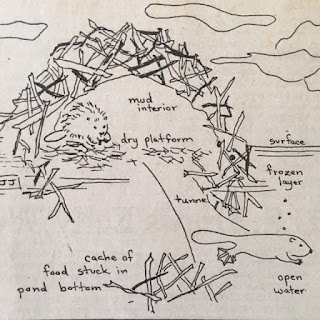Wonder Walks: Animal Signs and Flowing Water
This walk is in my woods beside Bresee Pond. There was a noisy pair of Canada geese on the pond, but otherwise I didn’t see or hear animals. It was a perfect time for being a wildlife detective - to look for the stories that were left behind.
Some words and science ideas to think about:
predator -- gravity (it pulls water downhill!) -- ponds & streams -- forces & energy -- sediments -- habitat -- carr -- shrub -- coniferous forest -- hemlock
After seeing the "natural sculpture" on the walk, are you wondering about the sphinx?
Search on your own, or take look at this link from book publisher DK:
Think about this - you can see the result of erosion on both the sphinx in Egypt and the stream bed in my forest. The force of wind or moving water breaks down rocks, and moves the sediments (bits of rock and soil) to new places.
Here are a few books to borrow from the library:
Some other things you can do:
- Go on a walk to look for signs of erosion. How many different kinds of sediments do you see? Gravel in a driveway or on the roadside is especially fun to look at after hard rain. Did the water flow like miniature streams and form puddles like small ponds? Geology in action! Make a little collection of your favorite sediments.
- Go to Google maps to look at local surface water. Try switching between map and satellite view to see the small streams that flow into and out of the ponds and lakes. https://www.google.com/maps/@43.701818,-73.2058043,4899m/data=!3m1!1e3
- Collect small sticks and mud to make a model beaver lodge or dam.
- Keep a journal or photo collection of animal signs you find. Write the date and place found, and try to figure out out their story (tracks, nests, claw marks, holes, scat).
Finally, here's a little poem/fingerplay for little people


Comments
Post a Comment